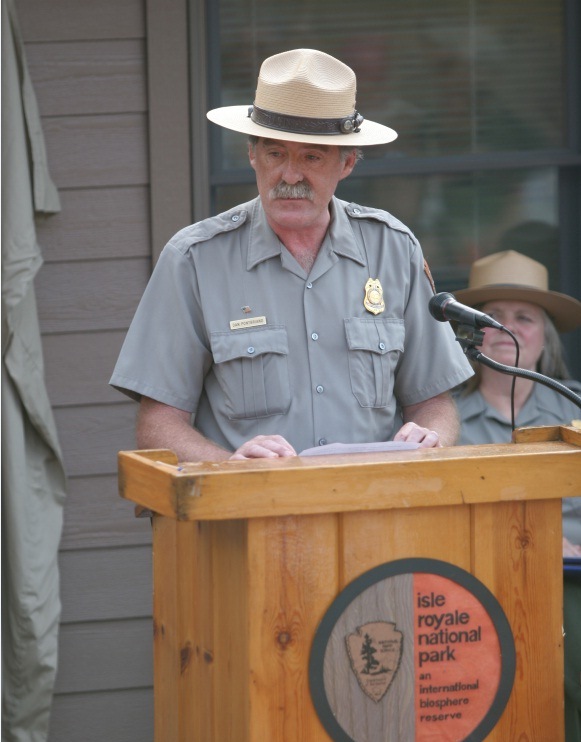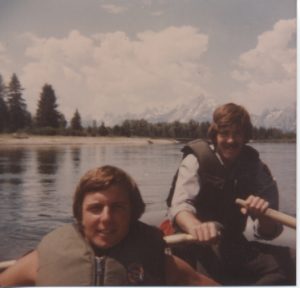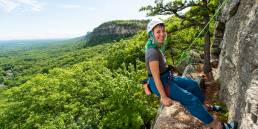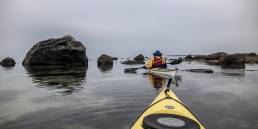The last time I saw Dan Pontbriand, he was preparing for a Maine-bound vacation, securing a couple of kayaks to the top of his truck with a healthy collection of bowlines, mules, and half-hitches. I knew he wasn’t thinking about the kayaks coming off the truck at highway speeds, but rather about a scenario he’s seen many times: tying a critically injured patient onto a backboard while hanging off the side of a cliff in one of our many National Parks.
Over Pontbriand’s 31-year career with the National Park Service, he has officially been called a Protection Ranger, a District Ranger, and a Chief Ranger in nine different parks, including Grand Teton, Olympic, and Sequoia National Parks. He has held leadership roles within the Park Service pertaining to wild-land fire fighting, law enforcement, search and rescue, and even served as the Chief of Emergency Services at the National Park Service Headquarters in Washington, D.C.
 Growing up in Auburn, Maine, Pontbriand became interested in the outdoors as a Boy Scout and through spending time in the woods with his father, an avid outdoorsman. He received a bachelor’s degree in 1979 from the University of Maine at Machias. This helped him kick off his career with the National Park Service that year as a River Ranger, a job in which he spent his days paddling and patrolling the Snake River in Wyoming. But not long after, Dan began to experience the thrill of intense mountain rescues.
Growing up in Auburn, Maine, Pontbriand became interested in the outdoors as a Boy Scout and through spending time in the woods with his father, an avid outdoorsman. He received a bachelor’s degree in 1979 from the University of Maine at Machias. This helped him kick off his career with the National Park Service that year as a River Ranger, a job in which he spent his days paddling and patrolling the Snake River in Wyoming. But not long after, Dan began to experience the thrill of intense mountain rescues.
Pontbriand said the most difficult search and rescue missions were the ones without an ending. One of these cases happened when he was a ranger in Olympic National Park. Pontbriand received a call about a missing hiker from Germany who had split up from his partner when misinterpreting the map’s distance calculations as kilometers instead of miles. Dan said that when he and the other rangers got the word, “the weather had already turned for the worse – typical Olympic Mountains winter weather: wet, cold, overcast, day after day after day.” Pontbriand and other rangers, including a NPS-trained search dog, searched for over two weeks in the most remote regions of the park, but unfortunately, the hiker remains missing to this day.
After responding to countless other rescues and searches during his career, Pontbriand has learned many lessons about managing risk while exploring and adventuring. His insight and wisdom, like that of many rangers you may meet during your next park trip, are extremely beneficial for both staying safe and making the most out of your National Park experience.
“There are so many causes as to why people get into trouble while visiting a National Park. Most problems arise when people fail to plan properly and simply do not know what their physical abilities are.”

According to a 2009 study, there are on average 11 search and rescue events in National Parks on any given day. “There are so many causes as to why people get into trouble while visiting a National Park,” Pontbriand said. “Most problems arise when people fail to plan properly and simply do not know what their physical abilities are.” He added that sometimes it’s as simple as visitors not taking advantage of the enormous amount of information the Park Service provides.
Assisting a capsized U.S. Coast Guard rescue team during a storm while they themselves responded to a small capsized sailboat off the coast of the Olympic Peninsula was one of the most intense rescues Pontbriand responded to.
“While en route, I heard the Coast Guard order a HH 60 helicopter to transport our rescue team to James Island to effect the rescue [of the Coast Guard team]. It was the only helicopter that had the power to fly in those conditions,” Pontbriand remembered. “The lone surviving [Coast Guard] crew member was rescued from a cliff face just as the morning light was illuminating the island.”
According a Pondbriand, another Coast Guard helicopter was able to pluck the sailors from the deck of the doomed sailboat. “If someone had asked me if it was possible to pluck two people off the deck of that boat in 50-foot seas, I would have said it was impossible. Yet, it happened.”

Dan’s job isn’t all exciting rescues. The amount of exploring he’s been able to do in some of the lesser-known national areas has been another highlight of his career. Only around 50 of the nearly 400 units the National Park Service maintains are National Parks. The rest are made up of National Seashores, National Monuments, National Historic Parks, and more, many of which have historic, cultural, recreational, and scenic opportunities just as valuable as the ones we’re so familiar with. According to Dan, “These 350 areas get far less notoriety and visitation [but] are all special places with secrets ready to be discovered.”
Examples of these lesser-known national areas include El Malpais National Monument in New Mexico, Canyon de Chelly National Monument in Arizona, and Buck Island Reef National Monument in the U.S. Virgin Islands. Like National Parks, these smaller areas also offer a wide variety of recreational opportunities, including camping, hiking, climbing, and snorkeling.
The U.S. National Parks are undoubtedly special places with diverse natural features, wildlife, culture, and climates. Rangers like Dan are a wealth of information and experience and are a valuable resource at your fingertips whenever you visit a park. Talking with a ranger might help you find that pristine and uncrowded swimming hole or the perfect location for your time-lapse Milky Way photograph, and they might give you the advice you need to stay out of the next search and rescue report during your trip!
Patrick Scanlan
Patrick is a part-time guide with the EMS Climbing School and a lifelong explorer of the forests and peaks of the White Mountains. Previously, he has worked in the High Huts of the Appalachian Mountain Club and he lived for 2 years in Tuckerman Ravine as the Caretaker of Hermit Lake Shelters. He has been involved with professional and volunteer rescue with the AMC and Androscoggin Valley SAR in Tuckerman and Huntington Ravine and the greater Presidential Range. Currently, Patrick is the program director for a backcountry skiing team of high school shredders at Carrabassett Valley Ski Academy at Sugarloaf, Maine. He is currently an American Mountain Guides Association(AMGA) Apprentice Ski Guide and Apprentice Rock Guide.
Related Posts
April 24, 2024
What to Bring When Road Tripping with Your Dog
Prepare for the ultimate road trip with…




